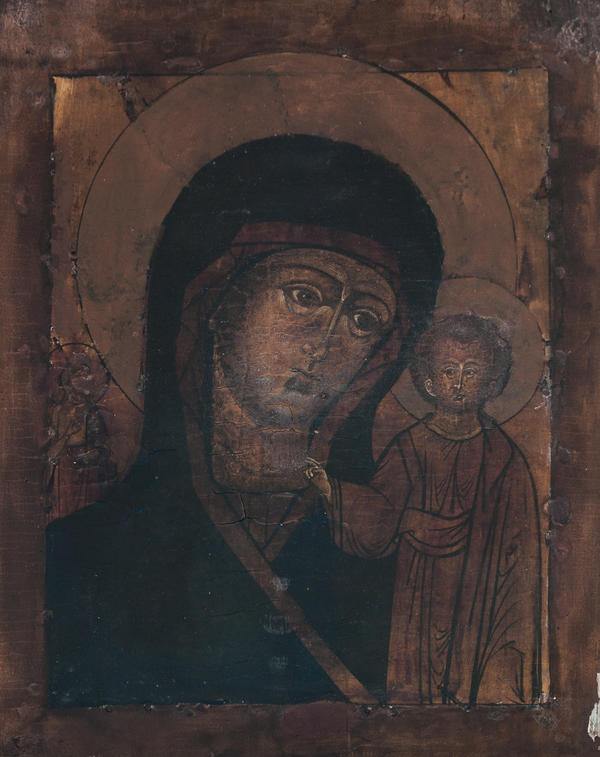The icon in Christianity, mainly in Orthodoxy and Catholicism, is a sacred image of persons or events from the biblical and ecclesiastical chronicles. The icon of Mother of God of Kazan is one of the most revered in the Russian Orthodox Church.
The collection features a half-length image of the Virgin Mary in a black chiton with a dark red hem and a wide halo above Her. She inclines Her head to the right towards the Infant Christ Who is clad in a dark red robe. He is depicted three-quarter length, facing forward, with His right hand raised in a blessing gesture — His two fingers make the sign of the cross. On the left in the background, God the Father is visible behind the shoulders of the Mother of God.
This exhibit is an original. The icon does not have a riza — a decorative metal cover. On the canvas, there are numerous craquelures, or cracks of the paint layer, which were fixed. In some places, the paint layer has been lost.
In 1579, a devastating fire broke out in Kazan, which also affected the Kazan Kremlin. Then, according to tradition, the Mother of God appeared to the nine-year-old Matrona in a dream for several days in a row and pointed out the place where the icon had been buried since the time of Muslim domination. Thus, on July 8 (July 21, according to the new style), the relic was recovered. This holiday in Orthodoxy is called the Day of Appearance of the Icon of the Mother of God at Kazan.
Mother of God of Kazan is considered one of the most important icons for the history of Russia. In 1612, Prince Dmitry Pozharsky, who led the people’s militia against the Polish invaders, asked to send him this icon before the decisive battle.
In the course of history, the icon became considered a holy symbol of the protection of the fatherland. Tsar Peter I prayed in front of it on the eve of the Battle of Poltava, and Mikhail Illarionovich Kutuzov — before the battle with Napoleon Bonaparte.
The icon of Mother of God of Kazan in Russia is also called the “Intercessor”, and the Mother of God is considered the patroness of Russia. “Hodegetria”, from the Greek “Pointing the way”, is one of the iconographic types of the image of the Mother of God with the infant Jesus Christ. The item from the museum collection belongs to this type. The name conveys the concept of all icons of the Virgin: the Mother of God leads those who believe in Christ.



